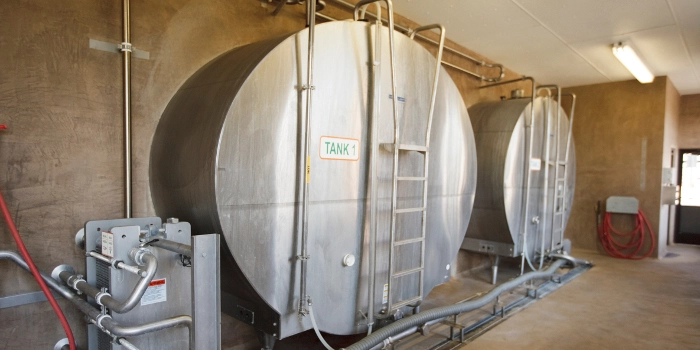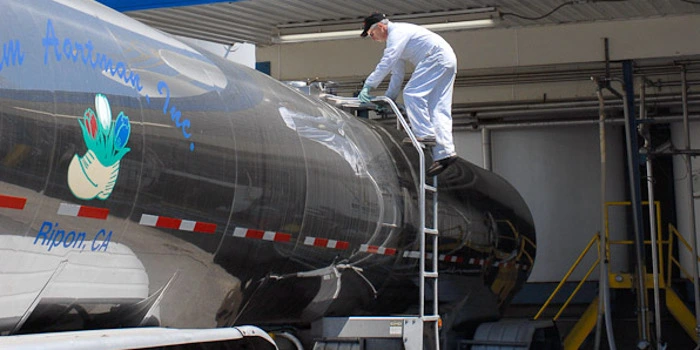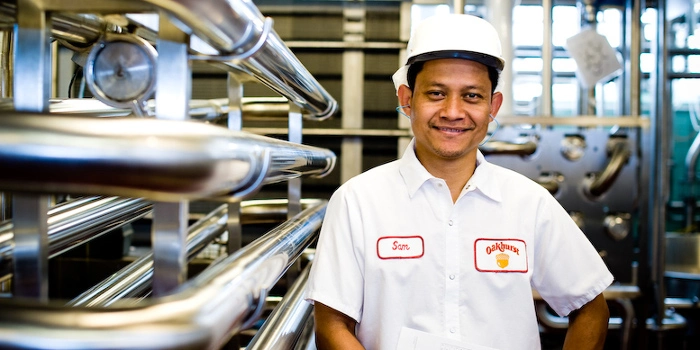Farm to Table: How Milk Goes From the Cow to Your Home
If you’re reading this, odds are you already know milk comes from cows. But have you ever wondered how this milk ends up at your local store?
In the two days it usually takes for milk to travel from the farm to the grocers, it goes through a structured multistep process to ensure its freshness and purity—steps that make milk one of the most regulated foods you can buy at the store. Here’s an insider’s look into that process, from farm to table.
Milk Goes From Healthy Cows to Milk Trucks…
The best milk comes from healthy cows, so farmers provide their cows with nutritious food, clean water and a comfortable environment—going so far as to provide water misters and fans in the summer and curtains to protect the cattle from the winds and snow of winter—all year long. And if a cow is sick and needs antibiotics (like penicillin) to heal, that cow is isolated and their milk discarded until the medicine is out of their system.
When it’s time to be milked, the healthy cows enter the milking parlor. While there are different styles of milking parlors, farmers use best practices to ensure the safety of your milk. One way they do this is by using mechanical milkers. This technology, which has been in place on most U.S. farms since the 1920s, is more sanitary and comfortable for the cows than milking by hand. Regardless of the farmer parlor style, human hands don’t touch the milk.

Upon being collected, milk is the same temperature as a cow’s body—roughly 100°F. But it doesn’t stay that way. The milk is sped to a tank, where it quickly cools to 45°F or less, for quality and safety, and stays until it’s picked up.

From Milk Trucks to Processing Plants…
Insulated milk trucks visit dairy farms on a regular basis in correlation with the size of the farm—the bigger the farm, the more they’ll visit, even multiple times each day. But before being transported, the full milk pickup is tested there on the farm to verify there’s no trace of anything that shouldn’t be there.
If the test shows such a trace, the entire tanker of milk is discarded. If the test is clean, the milk trucks take the pickup to the processing plant.

From Processing Plants to the Milk Aisle
Upon arriving at the processing plant, the milk is tested a second time to ensure its purity. If the test is clean again, then the milk undergoes a comprehensive process which includes the following three steps.
- Standardization: This process separates skimmed milk from the cream. Once the two are separated, they can be rejoined with different fat percentage levels. (If you ever wondered how we get 2% milk, low-fat milk and more all from the same cows, now you know!)
- Pasteurization: The milk is immediately heated following standardization. This heat kills any potential disease-causing bacteria that may have wound up in the unpasteurized milk.
- Homogenization: Last but not least, the fat in the milk is broken into smaller particles so it doesn’t separate and rise to the top.
Sometimes milk will also be fortified with vitamins A and D to make it even more nutritious. From there, it’s bottled and headed to your local store!
Click to enlarge




